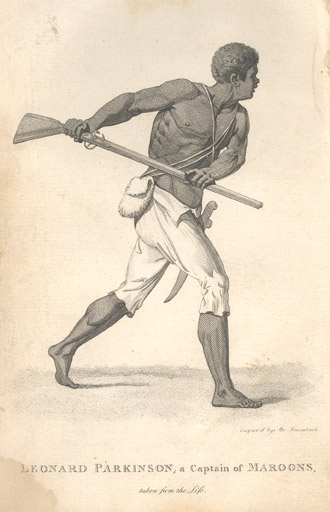Jamaican Maroons in Nova Scotia National Historic Event
Halifax, Nova Scotia

Engraving of a Maroon Captain, 1796
(© Nova Scotia Archives | Archives de la Nouvelle-Écosse)
Address :
Halifax, Nova Scotia
Recognition Statute:
Historic Sites and Monuments Act (R.S.C., 1985, c. H-4)
Designation Date:
2022-06-23
Other Name(s):
-
The Jamaican Maroons in Nova Scotia
(Designation Name)
Research Report Number:
2021-15
Importance:
Community in exile in Nova Scotia from 1796 until 1800, influence still felt by African Nova Scotians
Plaque(s)
Existing plaque: Halifax Citadel National Historic Site Halifax, Nova Scotia
The Maroons of Trelawny Town, formerly enslaved people of African ancestry and their descendants, lived in the Cockpit Country region of Jamaica. After the Maroon War (1795–1796), the British colony exiled more than 500 of them to Nova Scotia. Here, they maintained a strong sense of community, while facing pressures to assimilate and demands for their labour, including at the Citadel. For years, they petitioned for the freedom to leave. When Britain arranged their resettlement in Sierra Leone in 1800, a few remained, their resiliency and perseverance becoming a source of pride for the African Nova Scotian community.